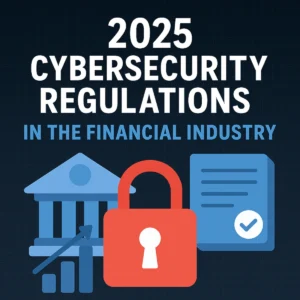In the world of cybersecurity, not every attack hides behind...
Read More
In the world of cybersecurity, not every attack hides behind encryption or malware. Some of the most sophisticated threats lurk in plain sight, literally!
This is where steganography, the ancient art of concealing messages within ordinary objects, reemerges as one of the most intriguing and elusive challenges in digital defense.
While encryption scrambles data to make it unreadable, steganography hides data altogether, embedding it inside seemingly harmless files, like images, audio, or even social media posts.
Today, cyber criminals are reviving this centuries old technique to bypass detection tools and communicate covertly across secure networks.
What Is Steganography?
The word steganography comes from the Greek words steganos (covered) and graphia (writing). In digital terms, it refers to concealing information inside ordinary data files.
For instance:
- An image may have its least significant bits (LSBs) modified to encode hidden text.
- An audio file might subtly alter sound wave amplitudes to carry encrypted commands.
- Even a PDF or social media post can be engineered to embed payloads or metadata invisible to the human eye.
This technique doesn’t alter how a file looks or sounds but inside, it may hold a complete script, encryption key, or malicious instruction.
Real World Examples: Steganography in the Wild
In recent years, steganography has been used in several high profile cyberattacks:
- 2018 – Sundown Exploit Kit: Hackers used images containing hidden JavaScript to deliver malware through legitimate websites.
- 2020 – Stegano/Astrum Campaign: Advertisements on popular sites were laced with encoded scripts inside PNG files to install spyware on victim machines.
- 2022 – APT29 (Cozy Bear): The Russian state backed group used steganography to embed C2 (command and control) communications within images shared on compromised servers.
In each case, the steganographic payload blended seamlessly with normal traffic, allowing attackers to evade antivirus detection and network monitoring tools.
“While encryption hides the meaning of a message, steganography hides the existence of the message itself.”
SANS Institute, 2023
Why Steganography Matters in Cyber Defense
For security analysts and threat hunters, steganography is a stealth tactic that can bypass even advanced detection systems. Because the hidden data is embedded inside legitimate looking content, traditional intrusion detection systems (IDS) often fail to flag it.
In enterprise environments, this technique can be used for:
- Covert command and control (C2) traffic between malware and operators
- Exfiltration of sensitive data disguised as routine media uploads
- Hidden watermarking in espionage or insider threat operations
- Bypassing content filters and sandbox inspection tools
The challenge isn’t just technical it’s philosophical. When everything digital can conceal something else, trust becomes probabilistic.
Detecting and Mitigating Steganographic Threats
While no tool guarantees full detection, layered defense makes a difference.
Security teams should:
- Implement deep content inspection (DCI): Go beyond metadata and analyze file entropy, size anomalies, and pixel variance.
- Monitor outbound traffic behavior: Large image uploads or repetitive transfers to unusual destinations can indicate hidden payloads.
- Leverage AI driven forensics: Machine learning models trained on known steganographic patterns can identify irregularities invisible to traditional filters.
- Harden egress controls: Restrict which systems can send data externally, especially those handling sensitive media or documents.
Organizations adopting Zero Trust principles should treat every file transfer as a potential data exfiltration attempt until proven otherwise.
The Future of Steganography: AI and Synthetic Media
The next frontier is AI driven steganography, where generative models such as Stable Diffusion or GPT based tools can embed hidden content during media creation. This makes detection exponentially harder, as the hidden data becomes part of the generation process itself.
Conversely, defenders are experimenting with AI based steganalysis, training algorithms to identify subtle distortions or anomalous encoding signatures.
The arms race is already underway, and it’s largely invisible.
Conclusion
Steganography may sound like digital espionage fiction, but it’s a growing reality in modern cybersecurity. As attackers evolve, defenders must think beyond surface level analysis.
Understanding steganography and integrating advanced detection into SOC workflows is essential for safeguarding against covert data leaks and hidden command channels.
In cybersecurity, what you don’t see can hurt you.
Call to Action
Stay one step ahead of hidden threats.
Subscribe to EagleEyeT for weekly cybersecurity insights, Zero Trust strategies, and emerging threat analysis because awareness is your best line of defense.
15 Essential Cybersecurity Regulations Every Financial Services Firm Must Know in 2025
Cyber threats targeting the financial sector are more sophisticated than...
Read MoreBeyond the Screen: How AI, Decentralization, and Immersive Tech Are Rewriting the Rules of Internet Security
The internet as we know it is undergoing a massive...
Read MoreFirefox Optimization Tweaks for 2025: Speed, Efficiency, and Privacy Perfected
Firefox has long been the browser of choice for users...
Read More



Leave a Reply